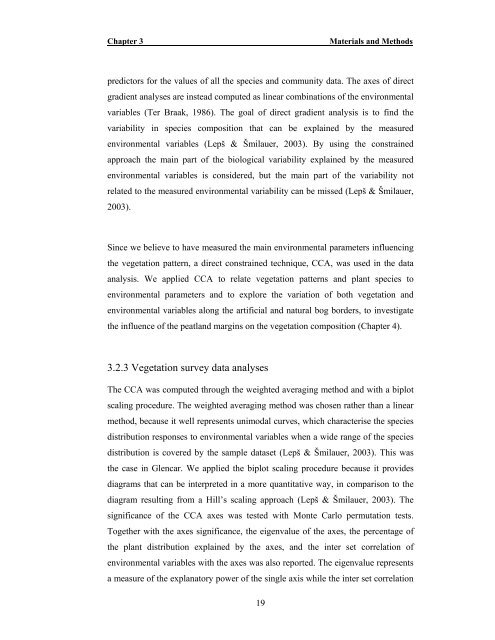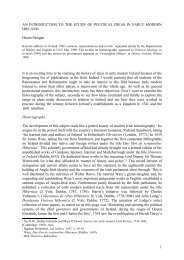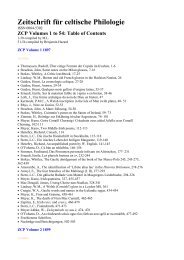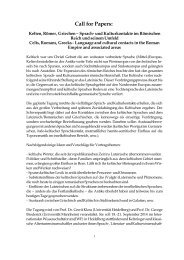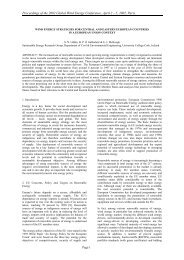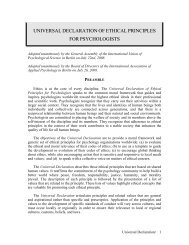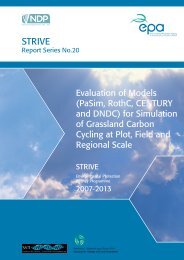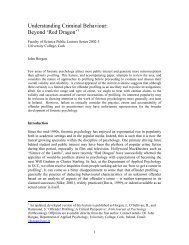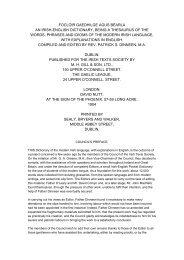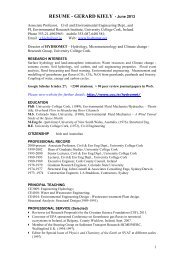PhD Thesis, 2007 - University College Cork
PhD Thesis, 2007 - University College Cork
PhD Thesis, 2007 - University College Cork
You also want an ePaper? Increase the reach of your titles
YUMPU automatically turns print PDFs into web optimized ePapers that Google loves.
Chapter 3<br />
Materials and Methods<br />
predictors for the values of all the species and community data. The axes of direct<br />
gradient analyses are instead computed as linear combinations of the environmental<br />
variables (Ter Braak, 1986). The goal of direct gradient analysis is to find the<br />
variability in species composition that can be explained by the measured<br />
environmental variables (Lepš & Šmilauer, 2003). By using the constrained<br />
approach the main part of the biological variability explained by the measured<br />
environmental variables is considered, but the main part of the variability not<br />
related to the measured environmental variability can be missed (Lepš & Šmilauer,<br />
2003).<br />
Since we believe to have measured the main environmental parameters influencing<br />
the vegetation pattern, a direct constrained technique, CCA, was used in the data<br />
analysis. We applied CCA to relate vegetation patterns and plant species to<br />
environmental parameters and to explore the variation of both vegetation and<br />
environmental variables along the artificial and natural bog borders, to investigate<br />
the influence of the peatland margins on the vegetation composition (Chapter 4).<br />
3.2.3 Vegetation survey data analyses<br />
The CCA was computed through the weighted averaging method and with a biplot<br />
scaling procedure. The weighted averaging method was chosen rather than a linear<br />
method, because it well represents unimodal curves, which characterise the species<br />
distribution responses to environmental variables when a wide range of the species<br />
distribution is covered by the sample dataset (Lepš & Šmilauer, 2003). This was<br />
the case in Glencar. We applied the biplot scaling procedure because it provides<br />
diagrams that can be interpreted in a more quantitative way, in comparison to the<br />
diagram resulting from a Hill’s scaling approach (Lepš & Šmilauer, 2003). The<br />
significance of the CCA axes was tested with Monte Carlo permutation tests.<br />
Together with the axes significance, the eigenvalue of the axes, the percentage of<br />
the plant distribution explained by the axes, and the inter set correlation of<br />
environmental variables with the axes was also reported. The eigenvalue represents<br />
a measure of the explanatory power of the single axis while the inter set correlation<br />
19


